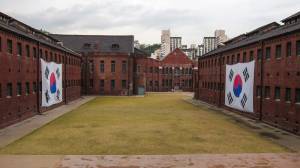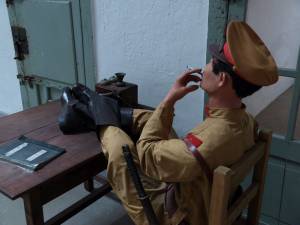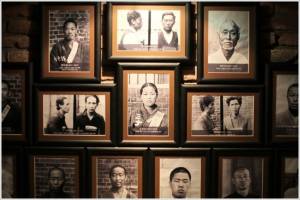On Tuesday, August 15, 2017, my former student Ji-Hyeong Choi was in Busan entertaining some visiting Japanese kids. She told me it was a wholly pleasant experience for all concerned. This, of course, is a good thing. Koreans and Japanese—young and old alike—need to embrace each other as friends and equals, unencumbered by past grievances.
Our former colonial masters
Nevertheless, when it comes to the 36-year Japanese colonial era in Korea, the best that can be hoped for is forgiveness because we (if I may be so bold as to use the first-person plural) are not going to forget.
At the same time Ji-Hyeong was performing her hostess duties in Busan, I was at Seodaemun Prison History Hall to help celebrate Korea’s 72nd liberation day. On this day in 1945, the Japanese surrendered and World War II came to a close. The suffering in Europe and Asia was so widespread that the liberation of Korea merited little attention elsewhere. But for perspective, I draw your attention to the fact that when Hirohito capitulated, approximately 250,000 delirious people gathered to celebrate in downtown Seoul. Few of them had kind thoughts for their former rulers.
A dark history
I had been to Seodaemun Prison History Hall several times before. In fact, when I moved to Seoul in February 2009, it was high on the list of places I had to see. This is where the Japanese had incarcerated,  tortured and killed so many Koreans almost from the day it opened in 1908. (The colonial era is said to have begun in 1910, but the Japanese had been in military control since imposing a treaty in 1905 and in fact had started squeezing the country economically even in the 1870s.) Am I overstating the case by asserting that this was a place of horror? Not at all.
tortured and killed so many Koreans almost from the day it opened in 1908. (The colonial era is said to have begun in 1910, but the Japanese had been in military control since imposing a treaty in 1905 and in fact had started squeezing the country economically even in the 1870s.) Am I overstating the case by asserting that this was a place of horror? Not at all.
It was a rainy day, but that did not seem to have deterred many people. Since I did not want to stand in line, I merely walked around the perimeter which enabled me to see the former prison from some different angles. A lady took a photo of me standing in front of the guard tower, and I took a few others. There were the red-brick barracks where people lived in tiny cells and endured maltreatment of every kind. There, also, was the killing house and the adjacent exit through which dead bodies were taken for discreet burial.
Some kind of celebration on that day
One can only speculate about the atmosphere in Seodaemun Prison on August 15, 1945. The Japanese guards knew two atomic bombs had been dropped on their country in the previous 10 days; not to  make light of a very serious matter, but Little Boy and Fat Man had done their jobs well. They knew the Japanese samurai martial spirit of never conceding defeat had been abandoned. They also knew the tables had been turned and the very people they had been abusing might now be in a position to exact revenge.
make light of a very serious matter, but Little Boy and Fat Man had done their jobs well. They knew the Japanese samurai martial spirit of never conceding defeat had been abandoned. They also knew the tables had been turned and the very people they had been abusing might now be in a position to exact revenge.
I left and walked across the street to a coffee shop. I was close enough that—had it been more than 72 years ago—I would have been able to hear the screams of Korean men and women being tortured and dragged to the killing house.

2 Comments
Very sad!
“Those who do not know history are doomed to repeat it” by George Santayana
Thank you Richard
You are right, Dong-il. Nice quote from Santayana! Where did you find it?
Add Comment